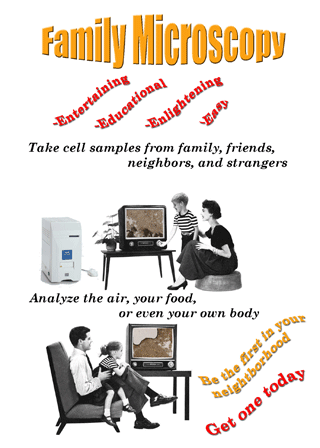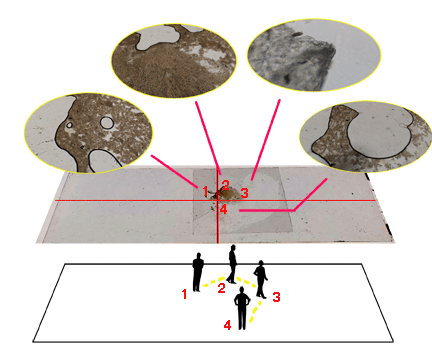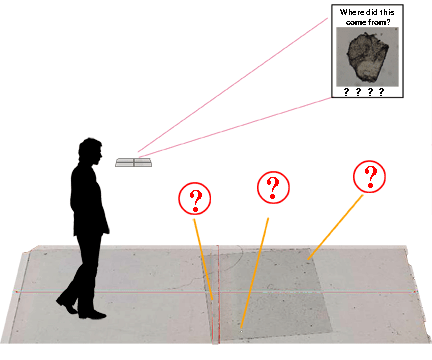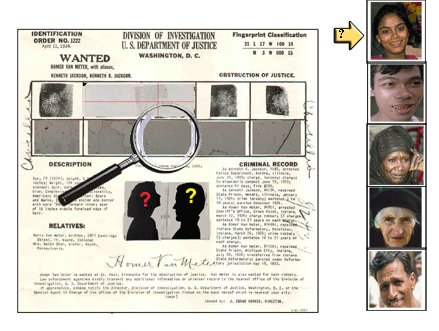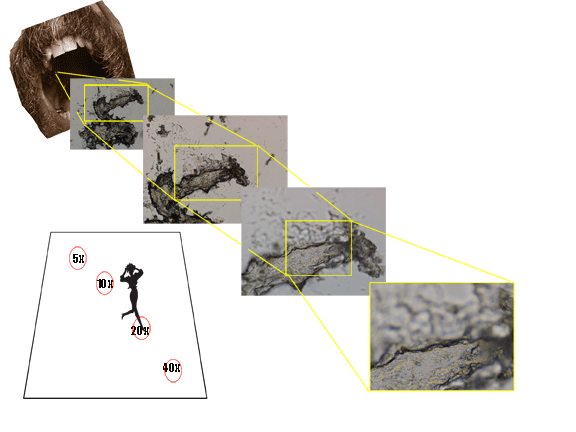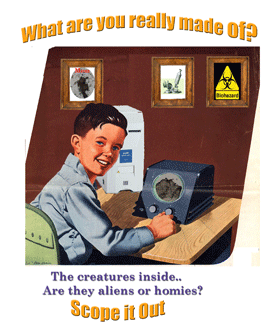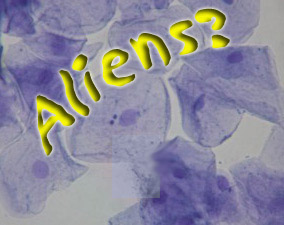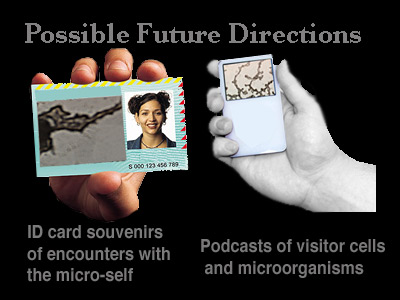Additional Theoretical Perspectives on
IntroSpection
Resistant Cultural Practices:
Some believe that artists can serve an important function by exposing
research tools and processes to the public. When research
processes are locked behind laboratory doors and manipulated only by
specialists, there are too many opportunities for mystification and
exploitation. A knowledgeable, familiarized 'amateur'
community can be empowered to be more willing and more effective in
discourse on public policy as it relates to issues in science and
technology. In "Body Invasion and Resistant Cultural
Practice", the Critical Art Ensemble describes the problem and
the opportunity for artists to intervene.
The greatest colonial
initiative, perhaps ever, is underway--full-scale body invasion at the
molecular level, making both immediate and cross-generational control
possible....the biotech revolution is a secret revolution, slowly
infiltrating and subverting the structure of everyday life. Biotech's
interventions into ordinary life occur stealthily with as little
representation as possible.
Resistant image makers have to begin at the fundamental level in order
to represent the unseen elements of biotechnical developments in ways
that axe accessible and meaningful to nonspecialists. CAE believes that
the best way to do this is through participatory projects in which
information and actual scientific projects are brought to
nonspecialists outside a context overwhelmed by the signs of scientific
authority.
The utopian rhetoric of the creators, manufacturers, and promoters of
scientific invention is relatively hard to argue with, because of a
popular perception that the public (nonspecialists in biology) cannot
comprehend scientific knowledge at an advanced enough level to be able
to validly comment on scientific claims and initiatives. The expertise
needed to understand science to allow a person to make an informed
decision about courses of biotechnological deployment is modest!
Amateurs should be a key part in this discussion (as in any with
revolutionary social potential) Art Journal, Fall,
2000 http://www.findarticles.com/p/articles/mi_m0425/is_3_59/ai_66238365
By introducing research microscopy with live samples into a public
media context, IntroSpection aims to move audiences toward this
familiarization. For many participants, it is the first time they
have ever seen or participated in the taking of a biological sample,
preparing it for a microscope, adjusting a microscope, or attempting to
interpret the images produced. The fact that the sample is from
their own body increases the salience. It is hoped that the
audience's level of familiarity and comfort with these processes
increases their interest and ability to enter into related public
policy discourse.
Ironically the historical development of microscopy and microbiology
was spurred on by the contributions of amateurs who were interested in
the micro world and microscopy from the position of curiosity rather
than professional practice. In 18th century Europe showings of
new discoveries were more public media events than anything else. (http://userwww.sfsu.edu/%7Einfoarts/links/microscope.present/art_and_micrscopy.html)
IntroSpection tries to reconnect with this history by increasing the
public's interest in what is usually seen as esoteric research topics.
Questioning
Paradigms of Distance and Objectivity in Biological Research:
The common view of biological research posits a clear distance between
the researcher and the specimens. Contemporary critiques of
scientific research, however, question the conceptual basis of this
division. For example, in Laboratory
Science, Bruno Latour and Michel Callon propose a different
model in which the experimenters, apparatus, and organisms are all
intertwined in an interlocked network. Donna Haraway similarly
emphasizes the cultural narratives that permeate experimental
procedures. In "The Promises of Monsters: A Regenerative Politics
for Inappropriate/d Others" she notes that the science of Biology and
its research processes do not offer an unmediated access to the living
world. The classic model of objective researcher and specimen
does not recognize that the specimen is a cultural construction rather
than just the entity itself:
We must find another
relationship
to nature besides reification and possession....Nature is not
hidden and so does not need to be unveiled.... Organisms are biological
embodiments; as natural-technical entities, they are not pre-existing
plants, animals, protistes, etc., with boundaries already established
and awaiting the right kind of instrument to note them correctly.
Organisms emerge from a discursive process. Biology is a discourse, not
the living world itself .
http://www.stanford.edu/dept/HPS/Haraway/monsters.html
IntroSpection aims to give the public a direct experience with these
discursive processes of research. It asks them to reflect on the
chain that links the phenomenological experience of their own body, the
extracted sample they take from their mouth, the transfer of their
sample to a slide, the microscope device which embodies centuries
of refinements in the way it optically and electronically processes the
sample to give views of it impossible to see with the unaided eye, the
adjustments they can make to change that view, and its ultimate
projection in the media space. Since it is their own sample, the
event disrupts the sanitized view of objectified scientific samples.
The complexity of our bodies made accessible by the microscope
also highlights the need for a more sophisticated notion of what
is the relationship among the sample, the instrument, the research
processes, and our internal experience of being a body. The
samples show cells from our bodies, other microorganisms, inorganic
matter, etc. How should one think about these things? Are they
self or non-self? The media event invites reflection by infusing
the animated visuals with contrasting vocabularies of invader/intruder
vs friend/relative/helper. Research makes these views available
but confronts the viewer with the fact that there is no "natural",
unmediated way to think about them.
Exposure
and Vulnerability:
Some analysts note that access to images such as the microscopic expose
the body in unprecedented ways. Aspects of the body that used to
be private are made public and available to strangers, authorities, and
institutions. X-rays, endoscopy, MRI's, etc become part of our
record. We encounter new kinds of vulnerabilities. In her book Body Criticism, Barbara Stafford
describes this exposure but also notes that the increased contact with
these images can help to stimulate the public to be sensitive to the
possibly invasive nature of medical and biological imaging technologies.
The computer-mediated
milieu
renders the body nakedly public ... Similarly, one result of the new
non-invasive imaging technologies in the area of medicine is the
capability of turning a person inside out....The increased exposure of
new medical technologies resulted in an intensified focus on the
philosophical, ethical and aesthetic considerations involved in various
medical procedures. New venues of communication technologies have
contributed to the re-examination of invasive and non-invasive methods
and the "objective" depersonalized attitude of the medical
establishment. http://mitpress.mit.edu/catalog/item/default.asp?ttype=2&tid=3542
IntroSpection asks people to take a biological sample from their mouth
and then submit it to the microscope. Their sample and those of
previous viewers become the heart of the visual animations of the
event. The 'Wanted Poster' subevent focuses on guessing the links
of samples with more conventional digital portraits of previous
viewers. The game ambience makes the exposure of samples seem
benign but the subtext encourages participants to carefully reflect on
the act of making these views of one self public. Some
participants refused to participate because of this exposure.
Bivalent
Views - Dangers and Celebration:
The Nikon automated 'Coolscope' microscope at the heart of
IntroSpection is quite an extraordinary device. In some ways it
democratizes what has been historically an esoteric process.
Preparing samples and working with research microscopes has previously
required advanced technical skills. Microbiology was restricted
to a small closed club. The automated, digital, networkable
microscope changes that. Some believe that its access will open
up microbiology research in the same way that microcomputers opened up
Information Technology research.
Others are not so optimistic. In addition to opening up public
access, it also makes bioidentification more available to authorities
to use for purposes of surveillance, control and exploitation. In
addition to artists being able to work with microscopes so will police
and marketing technicians. Similarly, as described in previous
section the mere access to this technology does not necessarily educate
those working with it to understand the cultural narratives that have
shaped the technology and the images it produces. It does not
alert those newly entering the field to view interpretations of the
images produced with skepticism and awareness of alternative paradigms.
My book Information Arts:
Intersections of Art, Science, and Technology (http://userwww.sfsu.edu/~swilson/book/infoartsbook.html)
warns that contemporary technological artists and theorists often seem
predisposed to position themselves only at the skeptical end of the
continuum. I argue that artists can benefit from maintaining a
bivalent view on these kinds of new technologies and the research
worlds associated with them. Certainly one should be wary of the
narratives of progress and the unexamined truth claims of the
researchers. But also one should appreciate the human
accomplishment - microbiology's urge to understand the world, the
desire to see beyond what the eye can see, and the intelligence and
persistance to develop and improve tools like the
microscope. IntroSpection tries to provide an environment in
which viewers can entertain both these perspectives on new developments
in microbiology and microscopy.
|
